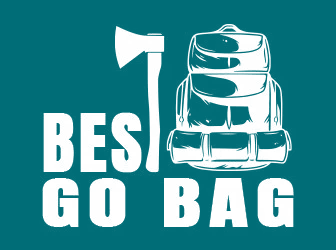In a continuing effort to provide helpful information to you during this uncertain time, 4Patriots is conducting what we call “Pandemic Prep Week.”
Our goal is to give you reliable tips, tricks, and inspiring stories each day this week. Today we’re focusing on telling the difference between accurate and inaccurate information. This is especially important when it comes to the coronavirus.
Many of us grew up in an era when a vast majority of published information was accurate. Newspaper, magazine and book editors believed the truth was paramount. Far more important than personal bias.
Of course, there were exceptions. Some unscrupulous people published false information. Either intentionally or through negligence. But for the most part, we could believe a high percentage of what we read.
And then the Internet came along. It’s a highly valuable resource, but it also opened the door for fake news. And once that fake news is published, social media helps it spread like wildfire.
This isn’t merely annoying. It’s dangerous. When people believe false information, it can cause them to take unhealthy actions. And pass that fake news along to others.
‘Infodemic’ Compounds Problems
This was an issue even before the coronavirus was declared a pandemic. Dr. Tedros Adhanom Ghebreyesus is the director general of the World Health Organization.
Here’s what he said about misinformation regarding the coronavirus. “We’re not just fighting an epidemic. We’re fighting an “infodemic.”
The Bruno Kessler Foundation tracked Twitter posts about the pandemic for a month. They found that 46,000 new posts were inaccurate or misleading.
A study conducted by New York University and Stanford University researchers showed this. Only 30 percent of people recognized false information in articles about the coronavirus.
Real Information Is Crucial in a Crisis
Most of us have learned to take what we see on the Internet with a grain of salt. But this transition from belief to skepticism has taken a while. Especially when it comes to things we want to believe are true.
The preponderance of false information has also caused us concern. This is certainly the case when it comes to deciding how to respond to a crisis. Such as the pandemic.
The coronavirus has life and death consequences. The last thing we want is to follow advice that turns out later to be false. We want reliable information that will help us keep ourselves and our families safe.
Over the past year, we’ve wanted to know what the symptoms are. We’ve wondered which facemasks are best. And if social distancing really helps prevent the spread. We’ve asked if statistics for numbers of cases, hospitalizations and deaths are real.
10 Ways to Analyze News
There is often no foolproof way to differentiate between true and false information. Unless an article is completely outlandish.
Here are examples. One rumor stated Russian President Vladimir Putin released 500 lions in Moscow to persuade residents to stay indoors to avoid infection. Another claimed eating sea lettuce or injecting disinfectant would prevent infection.
Here are a few suggestions that might help us in the process of separating fact from fiction.
- Beware of exaggerated language. The more hyped something is, the less likely it’s true.
- Be suspicious of conspiracy theories. Every once in a while an unusual theory will prove accurate. But they’re usually unfounded and exposed as falsehoods.
- Make sure the information is backed by reputable health organizations. Good reporters gain credibility for their articles by quoting experts.
- Don’t just read the headline. Especially if it seems outrageous. Read the article. Determine whether the facts warrant the headline that convinced you to read it.
- If you’re not familiar with a news source, do some research on it to see what people are saying. Also, check out websites focusing on fact-checking and media bias. Some rate news organizations for factual reporting and ideologies.
- You can even do some research on the reporter who wrote the article. If he or she has no health-related background, they may not be the pandemic expert they claim to be.
- Keep an eye out for vague sources of information. If a reporter says “a doctor” or “a scientist” says something without naming that person, be suspicious.
- Don’t just rely on one source for your information. Find collaborative articles to back up what you’ve read. And check out when the article was published. The more recent the better with something like the pandemic.
- Watch out for excessive numbers of typos. Legitimate news groups have editors who keep that kind of thing to a minimum.
- Don’t share information with others that you have not first confirmed. That’s how misinformation spreads as quickly as the virus does.
Get Critical Information – in a Hurry
I’ve discussed ways to differentiate between accurate and false information. Now I want to let you know about a reliable way to receive critical information in a timely fashion.
When extreme weather is threatening to reach your location, advance warning can make a huge difference.
That’s when the Liberty Band Emergency Solar Radio proves so valuable. Even if your power has been knocked out.
It features NOAA weather alerts, seven 24/7 weather channels and AM/FM and shortwave radio. Plus an LCD display clock with alarm and an ultra-bright LED flashlight.
You can recharge this lightweight, portable radio with the power of the sun. And it will even power up your phone and other electronic devices.



